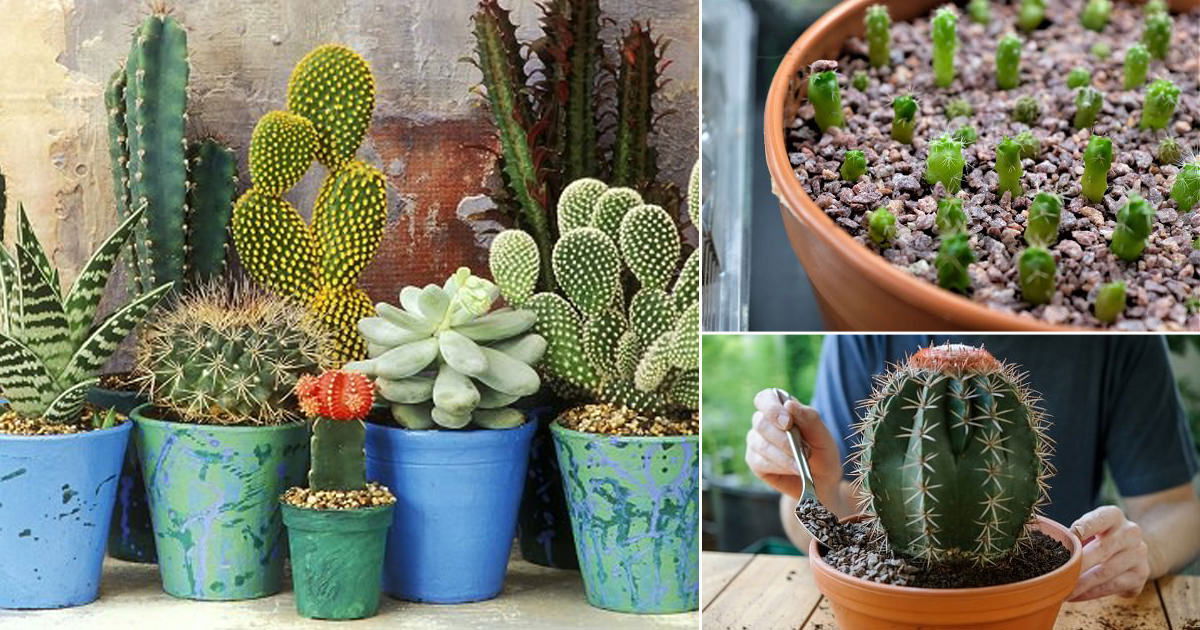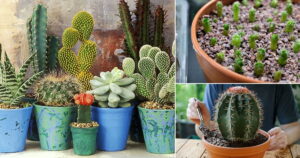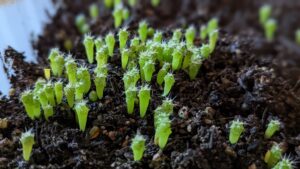Growing a cactus from seeds can be a rewarding endeavor. It allows you to appreciate the intricate life cycle of these resilient plants. This guide provides a comprehensive approach geared toward beginners, shedding light on the necessary steps and addressing common concerns surrounding cactus propagation.
When it comes to starting your journey in cactus cultivation, understanding the seeds’ biology is paramount. Cacti grow in a diverse range of environments, and their seeds are specialized for survival. Each species presents unique characteristics, but generally, cactus seeds require warmth, light, and moisture to germinate successfully. Knowing this will enhance your ability to create an optimal growing environment.
The allure of propagating cacti from seeds lies not only in the joy of giving life but also in the anticipation of seeing unique botanical features emerge. Cacti showcase an array of forms and colors, making them a fascinating yet often misunderstood group within the plant kingdom. This guide will walk you through the essential steps necessary for successful cactus propagation from seeds.
Preparation of the Right Environment
The initial step involves the meticulous choice of the growing environment. Cacti thrive in conditions that mimic their native habitats. A well-draining soil mix is a cornerstone of successful cactus growth, as these plants are sensitive to excess moisture. A typical cactus soil mix includes a combination of potting soil, sand, and perlite or pumice.
Creating a greenhouse-like environment can be beneficial as it maintains humidity and warmth, creating an ideal microclimate for germination. You can use a shallow tray covered with a clear plastic lid or plastic wrap to create this environment. Make sure to ventilate this space periodically to prevent mold growth and ensure that air circulation is consistent.
Lighting is another crucial parameter. Cactus seeds need bright, indirect sunlight for optimal germination. A south-facing window is ideal, but if natural light is scarce, consider using grow lights. Position the light source close enough to provide warmth but not so close that it causes overheating or scorching.
Choosing Quality Seeds
The selection of seeds is fundamental to the success of your cactus propagation journey. Look for seeds from reputable suppliers, ensuring that they are fresh and viable. Many cacti species are popular among collectors, each with distinct characteristics. For beginners, consider starting with easier varieties like Echinopsis or Ferocactus, which tend to have higher germination rates and resilience.
Once you have secured quality seeds, it is almost time to plant them. However, before you dive into the planting process, it’s important to understand the stratification needs of different seeds. Some cacti benefit from a period of cold treatment, while others can be sown immediately. Review specific seed packets or research their requirements to maximize germination success.
Planting Seeds: A Step-by-Step Method
Now, let’s delve into the meticulous process of planting cactus seeds. First, fill your trays with the prepared soil mix, leaving a small gap at the top. Lightly moisten the soil, taking care to avoid oversaturation. Scatter the seeds evenly across the surface, and for some species, you might gently press them into the soil. However, do not bury them deeply; cactus seeds thrive best with light exposure.
After planting, lightly mist the surface with water using a spray bottle. Then, cover the tray with the plastic lid or wrap to retain moisture. Place the tray in the designated warmth and light spot, and monitor it closely.
As days pass, a flutter of excitement builds when you observe new life emerging. Be patient; cactus seeds can have variable germination timelines, ranging from a few days to several weeks, depending on the species and environmental conditions.
Caring for Your Sprouts
Once the first seedlings emerge, the care shifts toward ensuring they thrive. Remove the plastic cover gradually over time to acclimate them to ambient conditions. This process is known as ‘hardening off’ and is crucial for preventing shock when transitioning between environments.
Seedlings require consistent moisture but do not let them sit in water, as this invites root rot. Water them gently, allowing the top layer of soil to dry out before re-moistening. A diluted cactus fertilizer can be administered after a few weeks to provide essential nutrients and promote healthy growth.
As they develop, monitor for potential issues such as pest infestations or fungal diseases. Early intervention is crucial in mitigating damage to the fragile seedlings. Address pest problems with organic insecticides, and maintain appropriate air circulation to prevent fungal growth.
Transplanting and Future Care
As your cacti grow into sturdy plants, the time will come for transplanting. Once they have developed at least a few spines and are large enough to handle, you can carefully transfer them into individual pots filled with cactus soil. This move allows for their continued growth and development without competition for resources.
Long-term care of your cacti will involve monitoring their growth, adjusting watering frequencies, and ensuring they receive adequate sunlight. Understanding the specific needs of the species you’ve cultivated is vital, as each variety has its preferences for sunlight, humidity, and temperature.
Conclusion
Growing cacti from seeds is a profound experience that opens the door to the world of plant cultivation. While it requires patience and attention to detail, the rewards of watching these unique plants flourish are worth the effort. By following the methods outlined above, beginners can embark on an enriching journey that highlights the resilience and beauty of the cactus family.





Leave a Comment